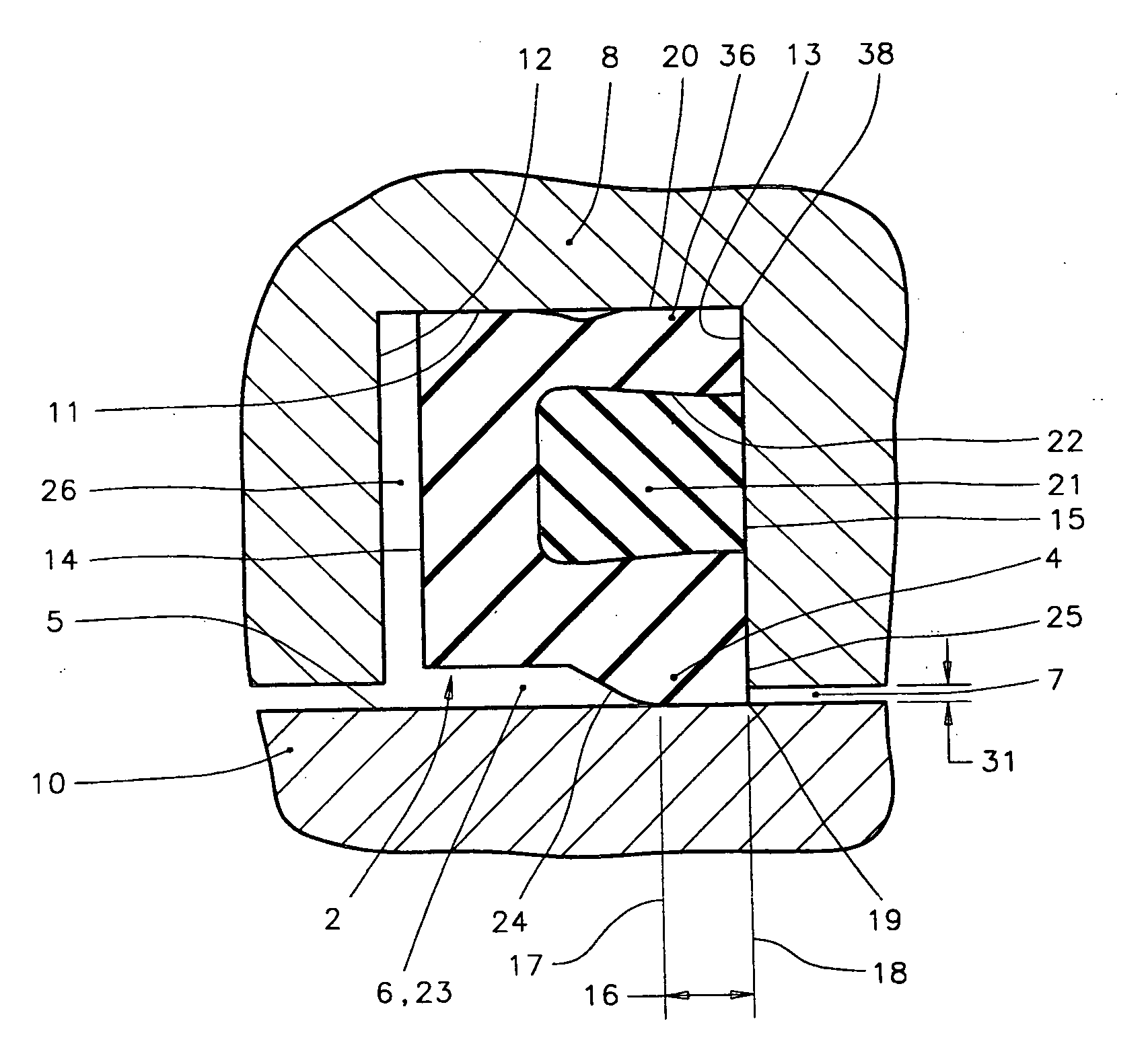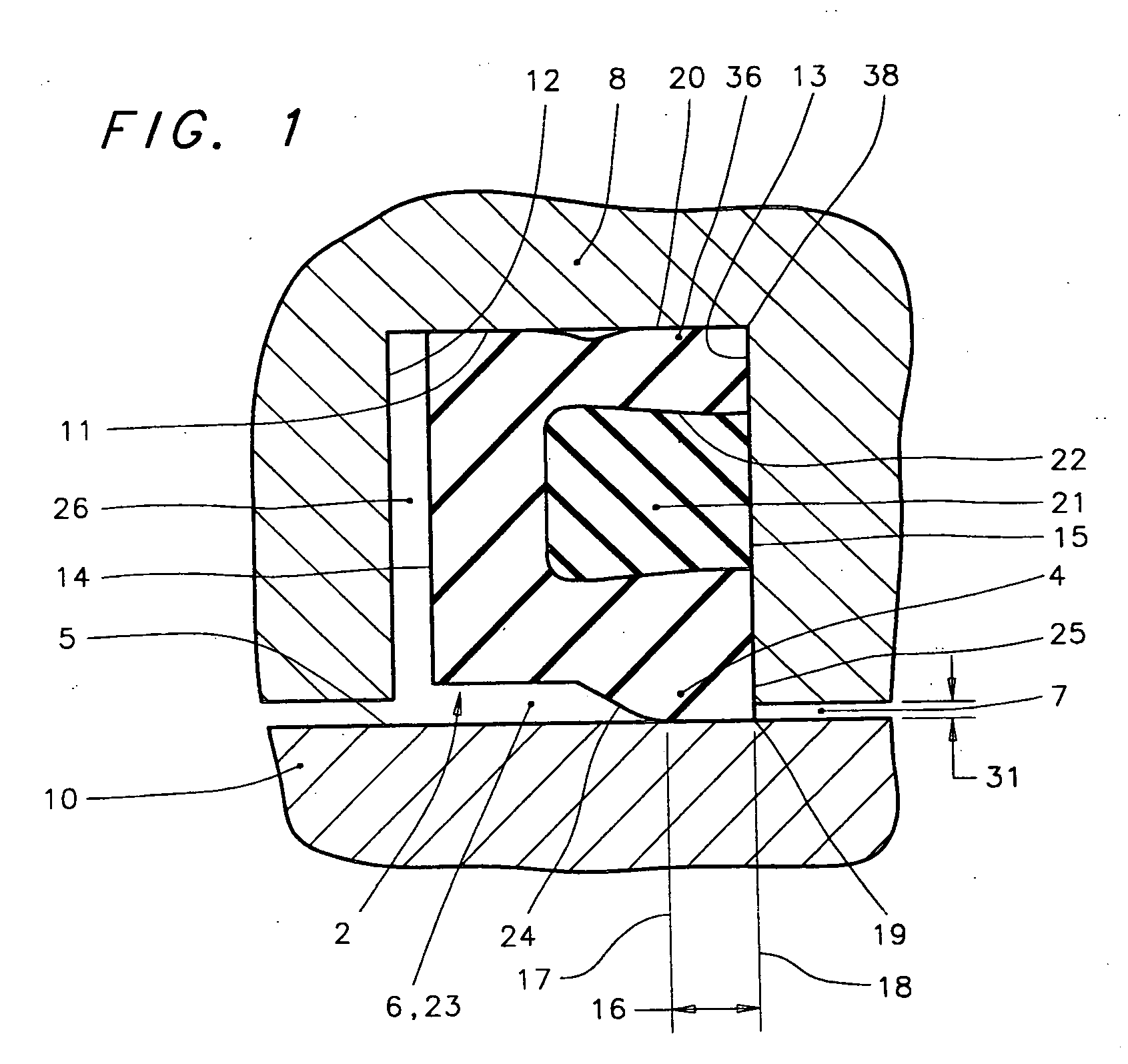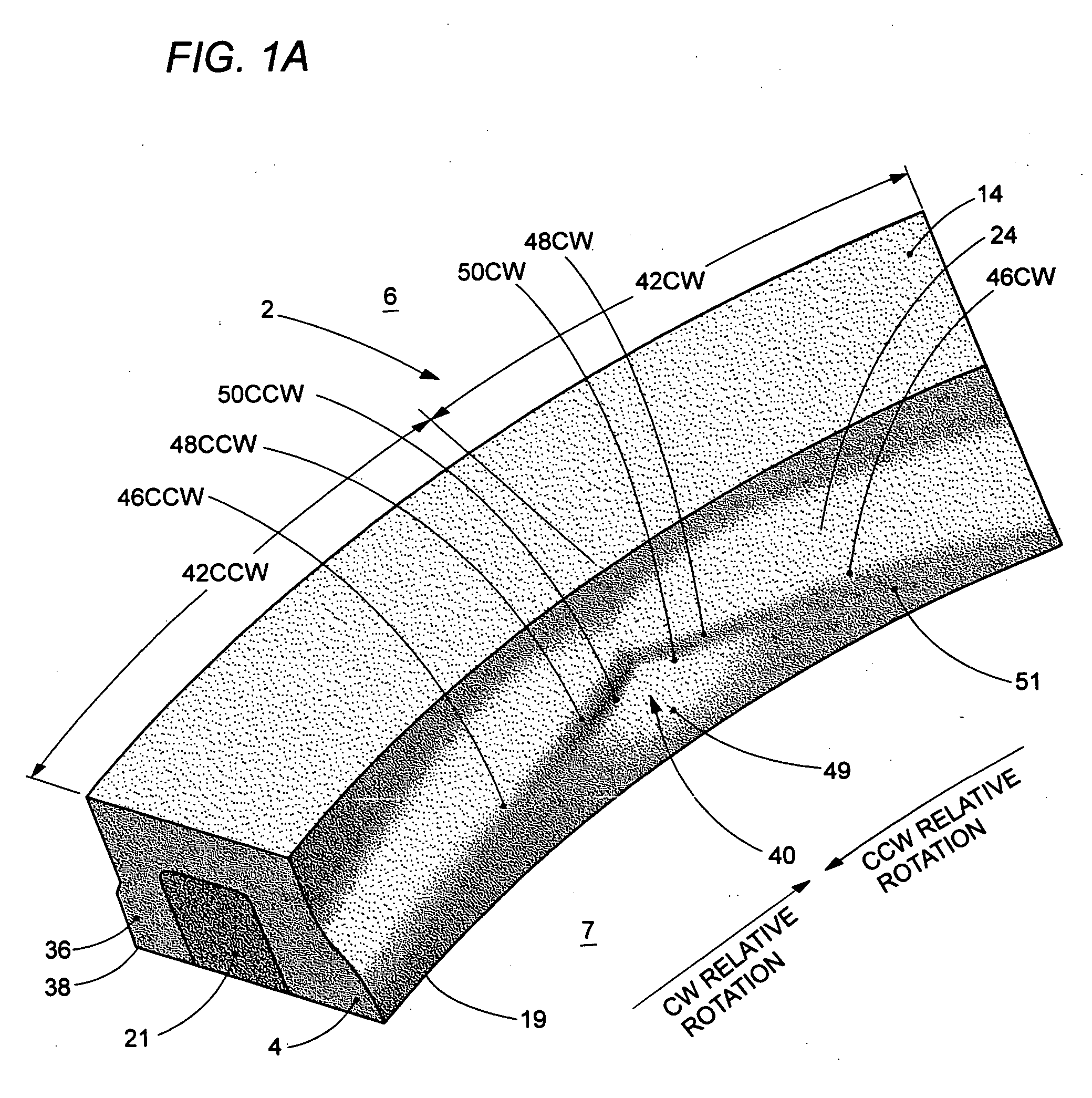Low torque hydrodynamic lip geometry for bi-directional rotation seals
a hydrodynamic lip geometry and bi-directional rotation technology, applied in the direction of engine seals, mechanical equipment, engine components, etc., to achieve the effect of prolonging the life of the seal
- Summary
- Abstract
- Description
- Claims
- Application Information
AI Technical Summary
Benefits of technology
Problems solved by technology
Method used
Image
Examples
Embodiment Construction
[0056]FIGS. 1-2B should be studied together, in order to attain a more complete understanding of the invention, because the total concept cannot be perfectly conveyed by any single figure. Features throughout this specification that are represented by like numbers have the same function. For orientation purposes, it should be understood that in the cross-sectional views of FIGS. 1, 1D-1F and 4-13, the cutting plane of the cross-section is aligned with and passes through the theoretical axis of the seal; and the sketching plane of the schematic views of FIGS. 16-17 is at right angles to the theoretical axis of a seal that is configured for sealing against a relatively rotatable shaft.
Description of FIG. 1
[0057]FIG. 1 is a fragmentary cross-sectional view that provides a general overview of how the preferred embodiment of the present invention is employed when assembled into a machine. A rotary seal 2 of generally circular, ring-like configuration includes at least one dynamic lip 4...
PUM
 Login to View More
Login to View More Abstract
Description
Claims
Application Information
 Login to View More
Login to View More - R&D
- Intellectual Property
- Life Sciences
- Materials
- Tech Scout
- Unparalleled Data Quality
- Higher Quality Content
- 60% Fewer Hallucinations
Browse by: Latest US Patents, China's latest patents, Technical Efficacy Thesaurus, Application Domain, Technology Topic, Popular Technical Reports.
© 2025 PatSnap. All rights reserved.Legal|Privacy policy|Modern Slavery Act Transparency Statement|Sitemap|About US| Contact US: help@patsnap.com



